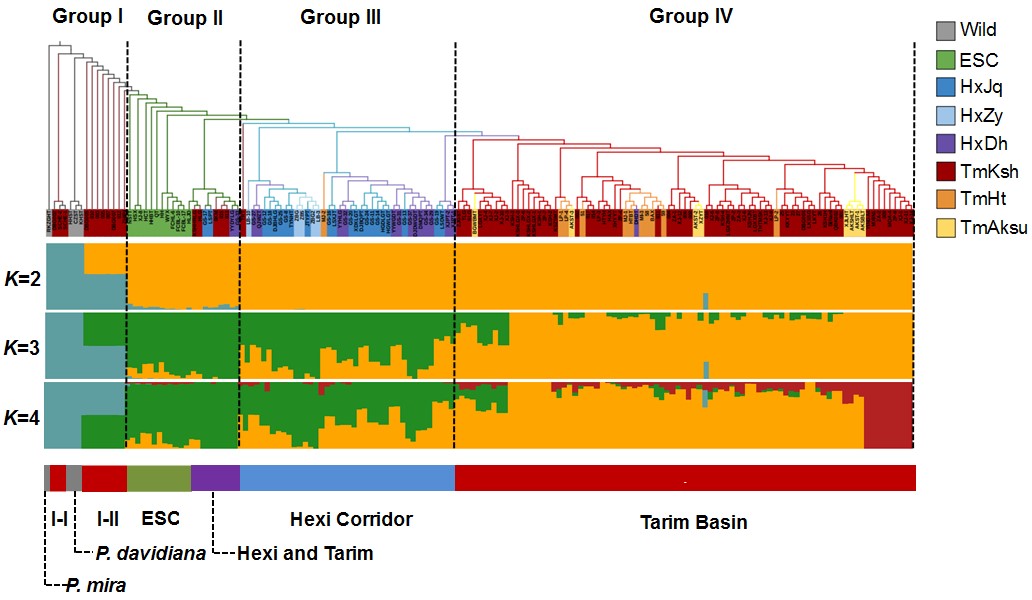Recently, the peach germplasm resources and genetic breeding team of Zhengzhou Fruit Research Institute of CAAS used genome-wide resequencing technology combined with population genetic analysis to reveal the characteristics of peach genetic diversity in northwest China, providing theoretical support for the protection, development and utilization of peach germplasm resources in northwest China. The related research results were published in Horticultural Plant Journal (IF=5.7).

Phylogenetic tree and model-based clustering of 161 peach accessions
Peach ( Prunus persica ) originated in China. Hexi Corridor and Tarim Basin are the concentrated distribution areas of peach germplasm resources in northwest China, with the most abundant local varieties. However, the source and diversity level of peach germplasm resources in this area are unknown, which seriously hinders the effective development and utilization of peach germplasm resources in northwest China. Based on the analysis of genetic relationship and population structure, 161 peach germplasm were divided into wild relatives, East and South China landraces, Hexi Corridor landraces and Tarim Basin landraces. Genome analysis showed that the genetic diversity of peach in Hexi Corridor and Tarim Basin was lower than that of wild relatives and landraces in East China and South China because of the sharp decline of population size caused by the Last Glacial Maximum. Genome-wide enrichment analysis of selected genes showed that the selected genes in Hexi Corridor population were mainly concentrated in salicylic acid signal pathway and response to stress, while those in Tarim Basin population were mainly concentrated in nucleotide synthesis and repair pathway, all of which were related to response to stress, indicating that peaches in Hexi Corridor and Tarim Basin were more selected from environmental pressure during domestication.
The research was supported by the National Key Research and Development Project, the Agricultural Science and Technology innovation Project of China Academy of Agricultural Sciences, the Crop Germplasm Resources Protection Project and the National Horticultural Germplasm Resource Bank.
The paper link: https://doi.org/10.1016/j.hpj.2022.07.009
By Li Wenqing
caaslwq@163.com
